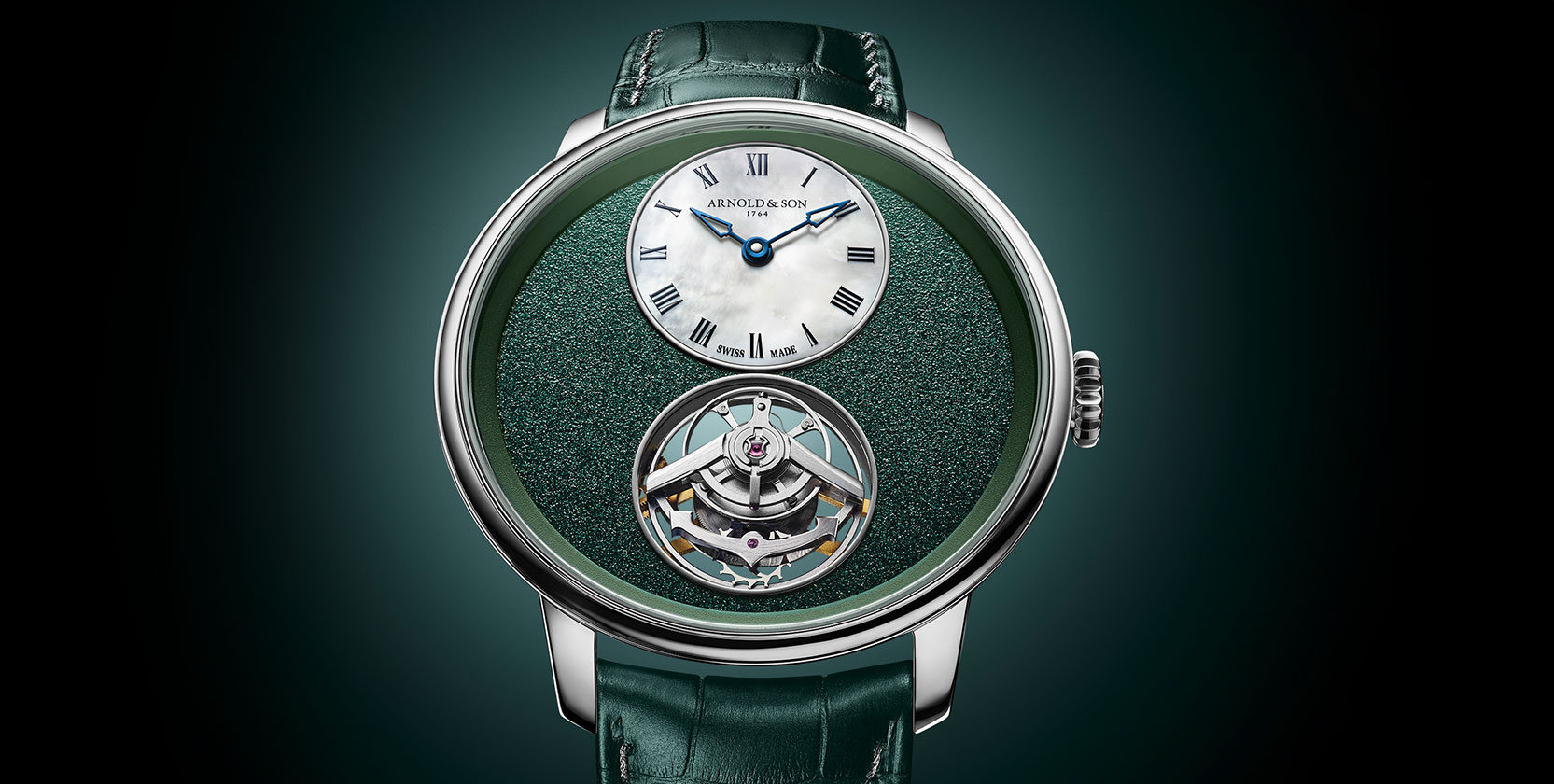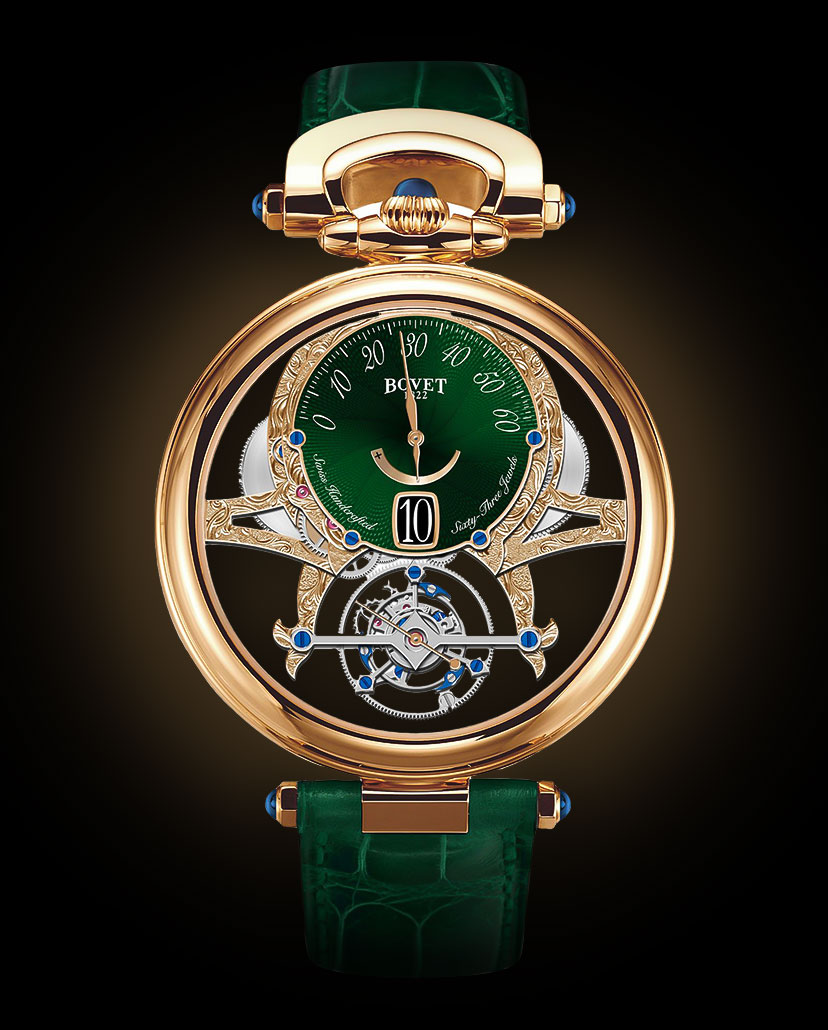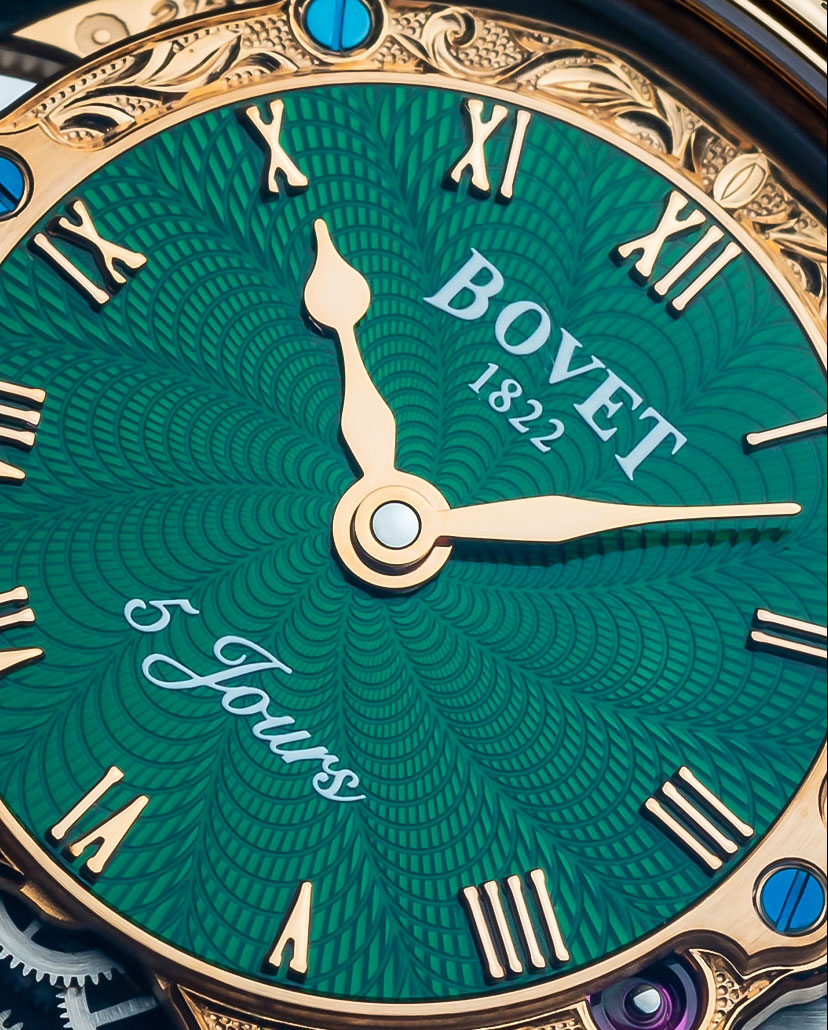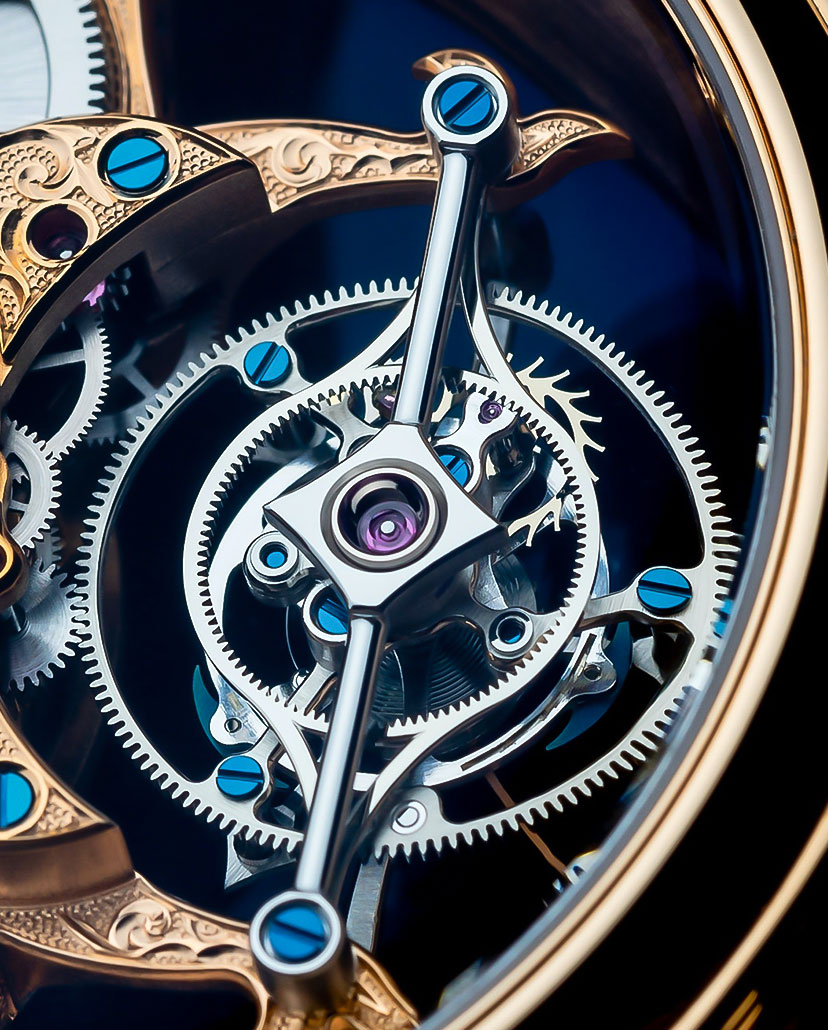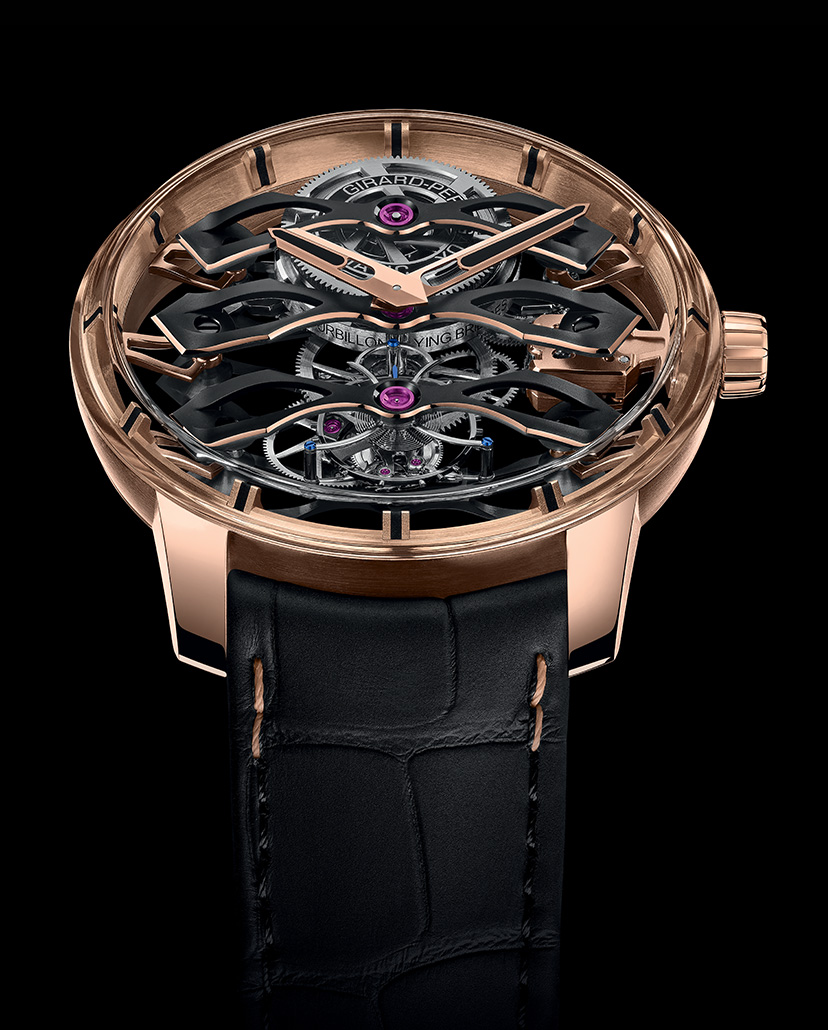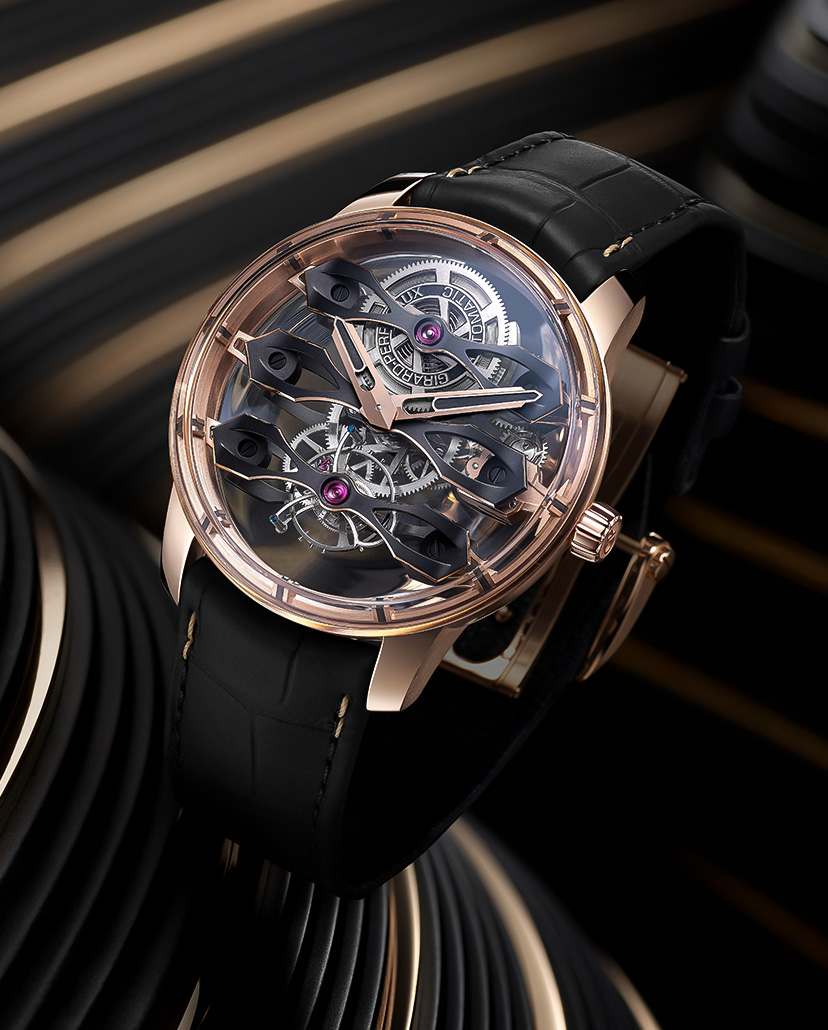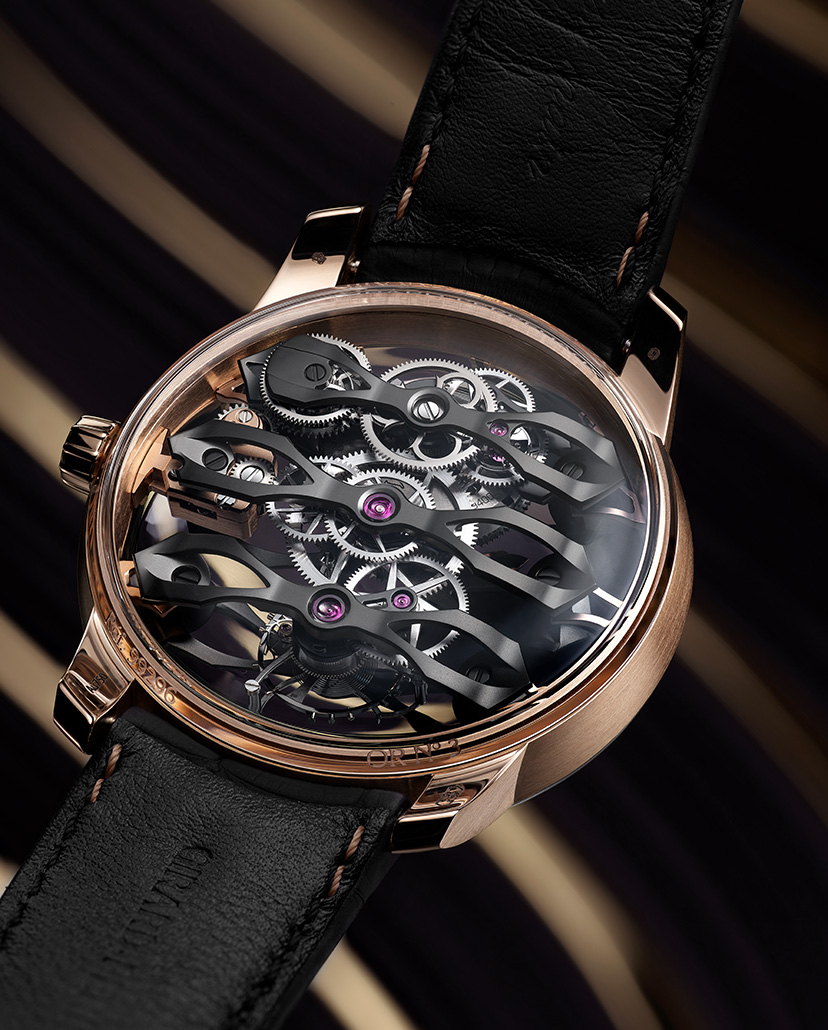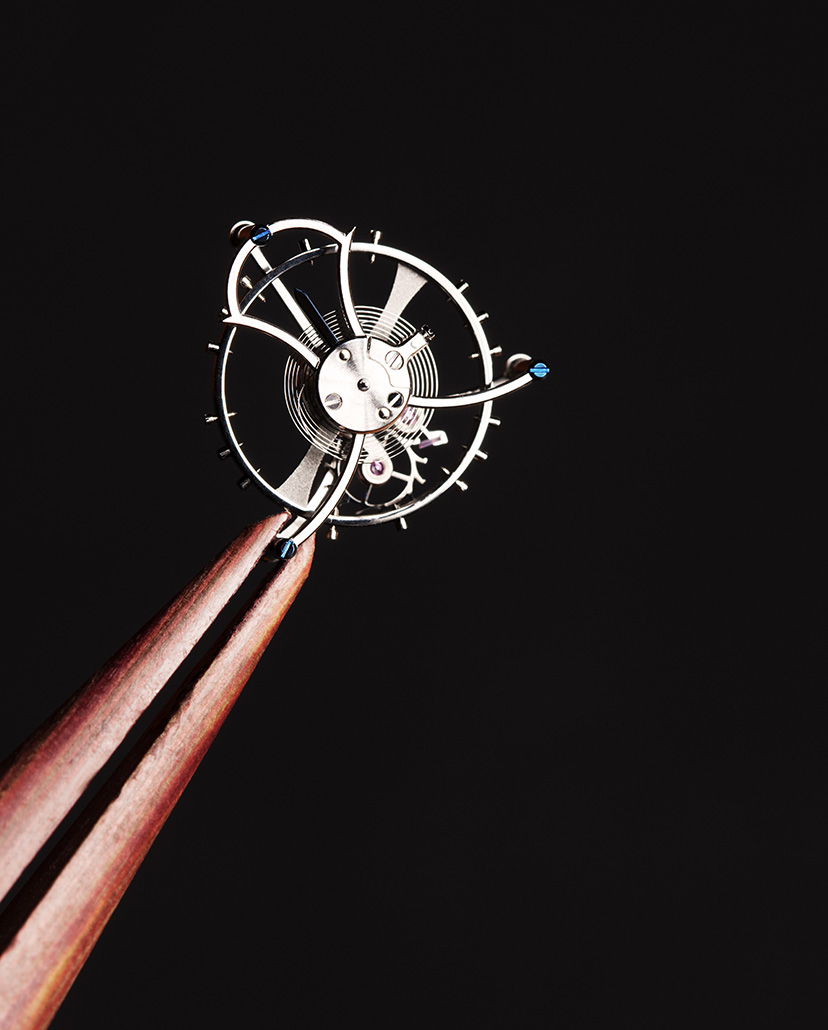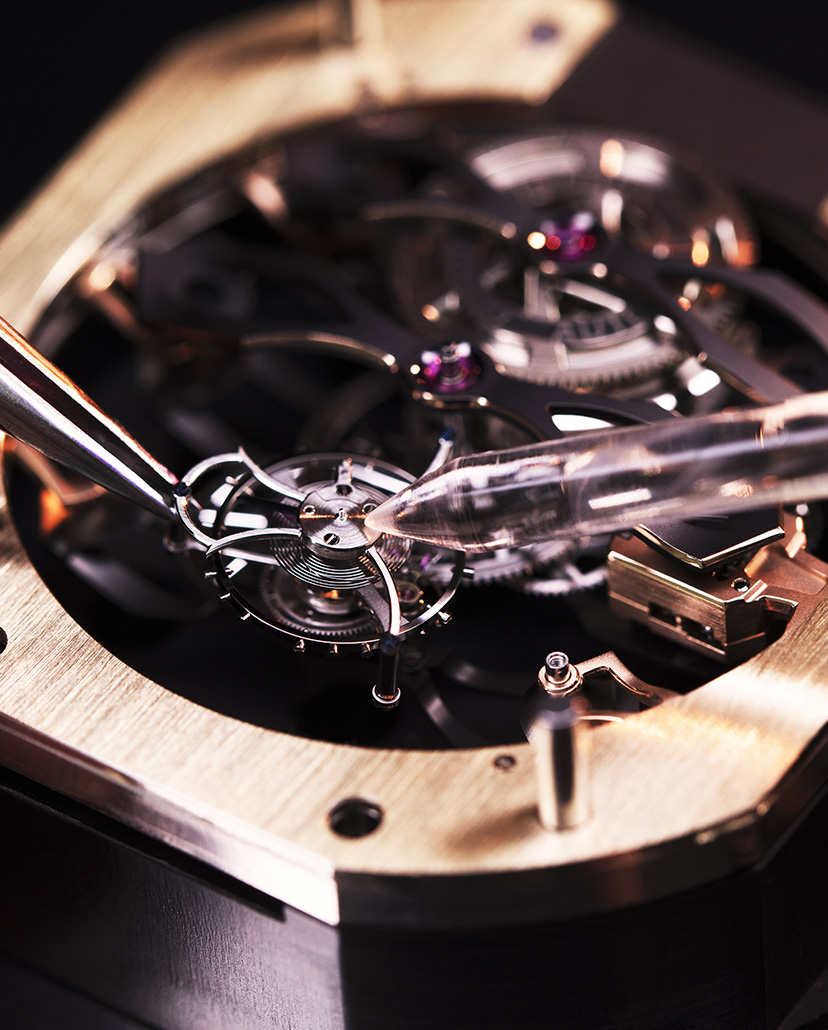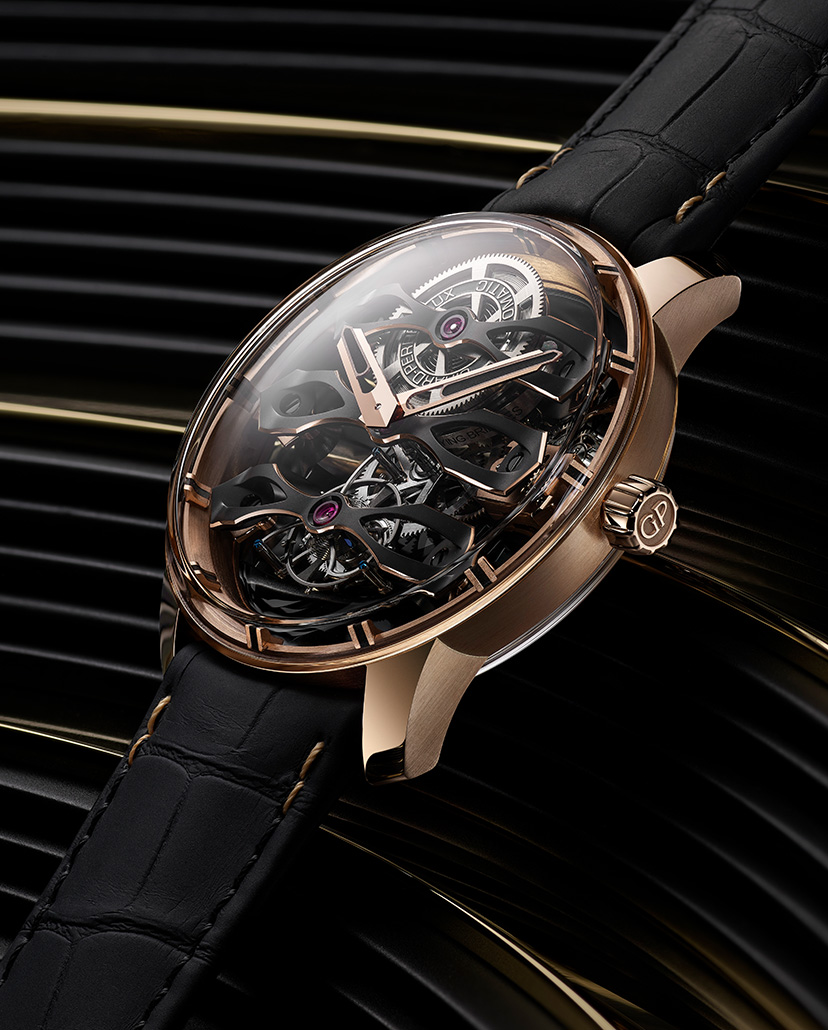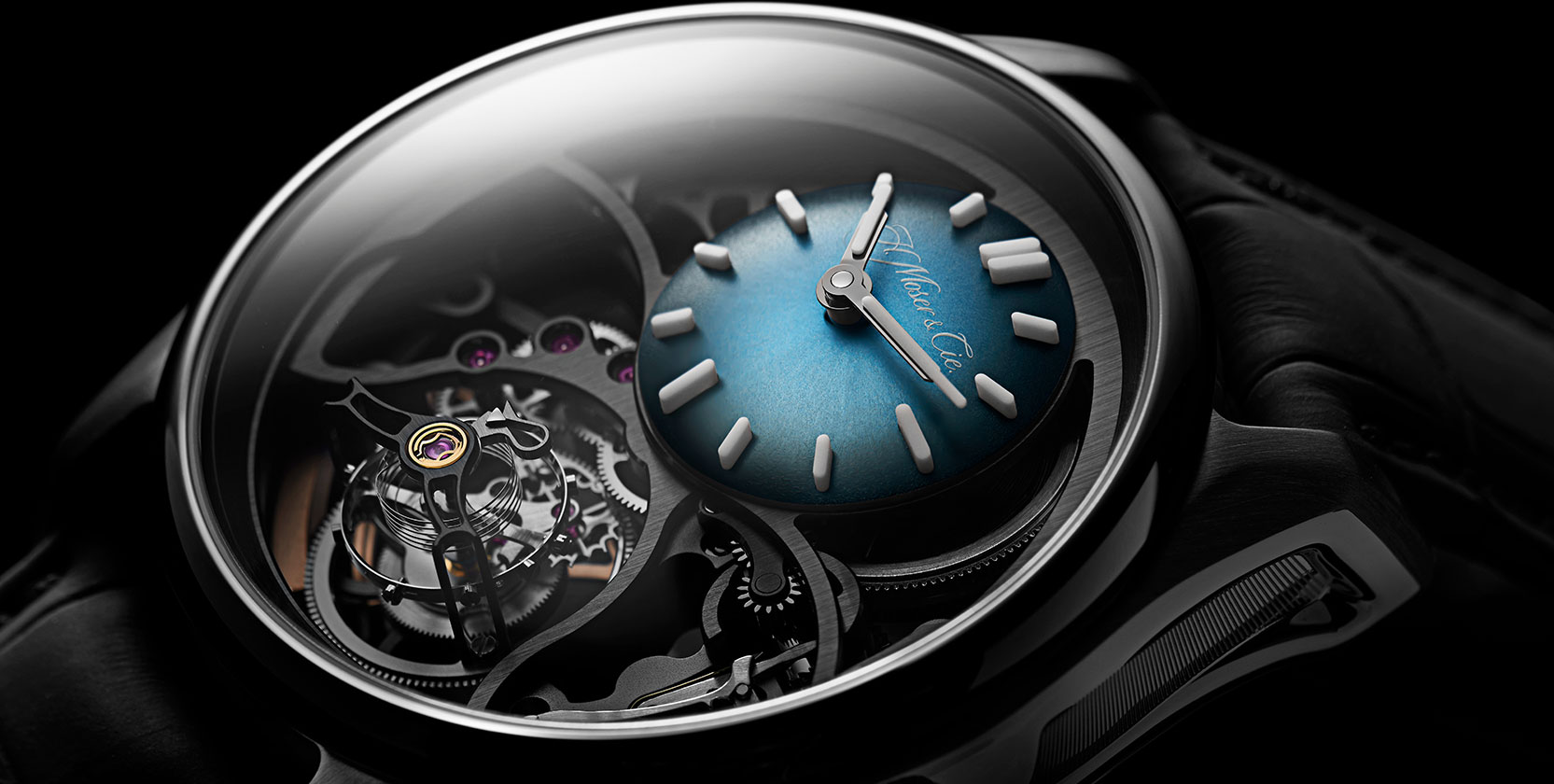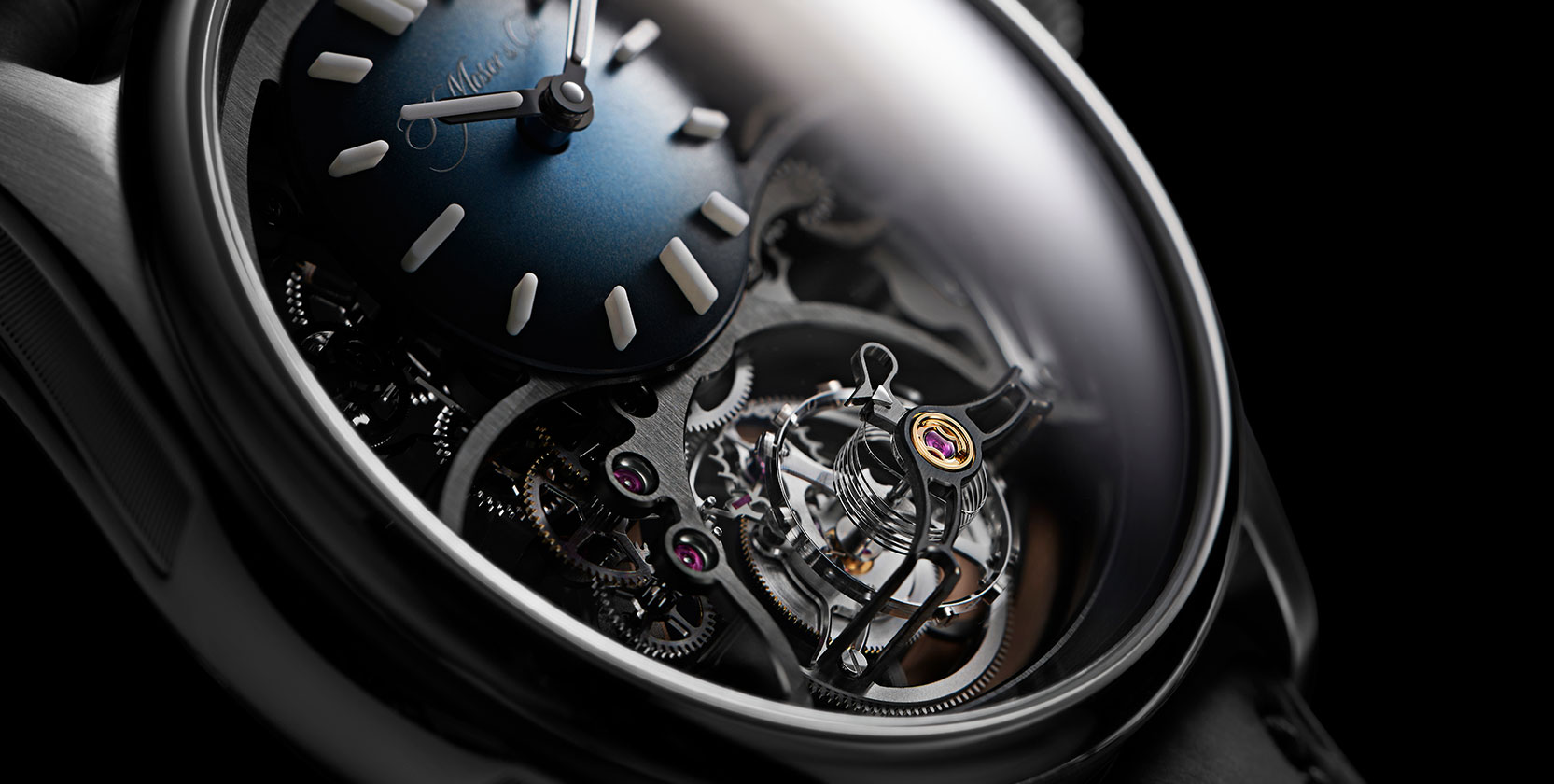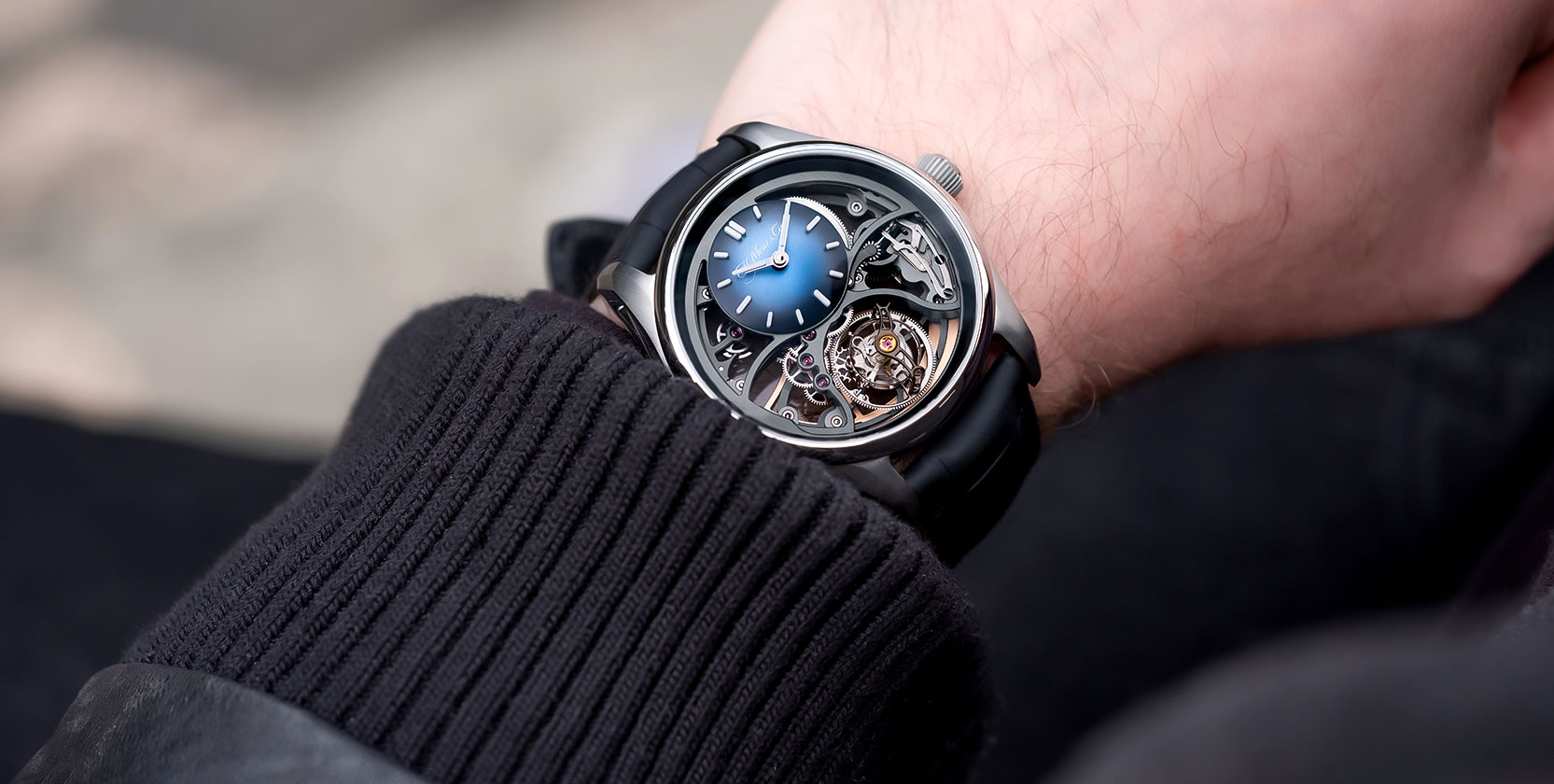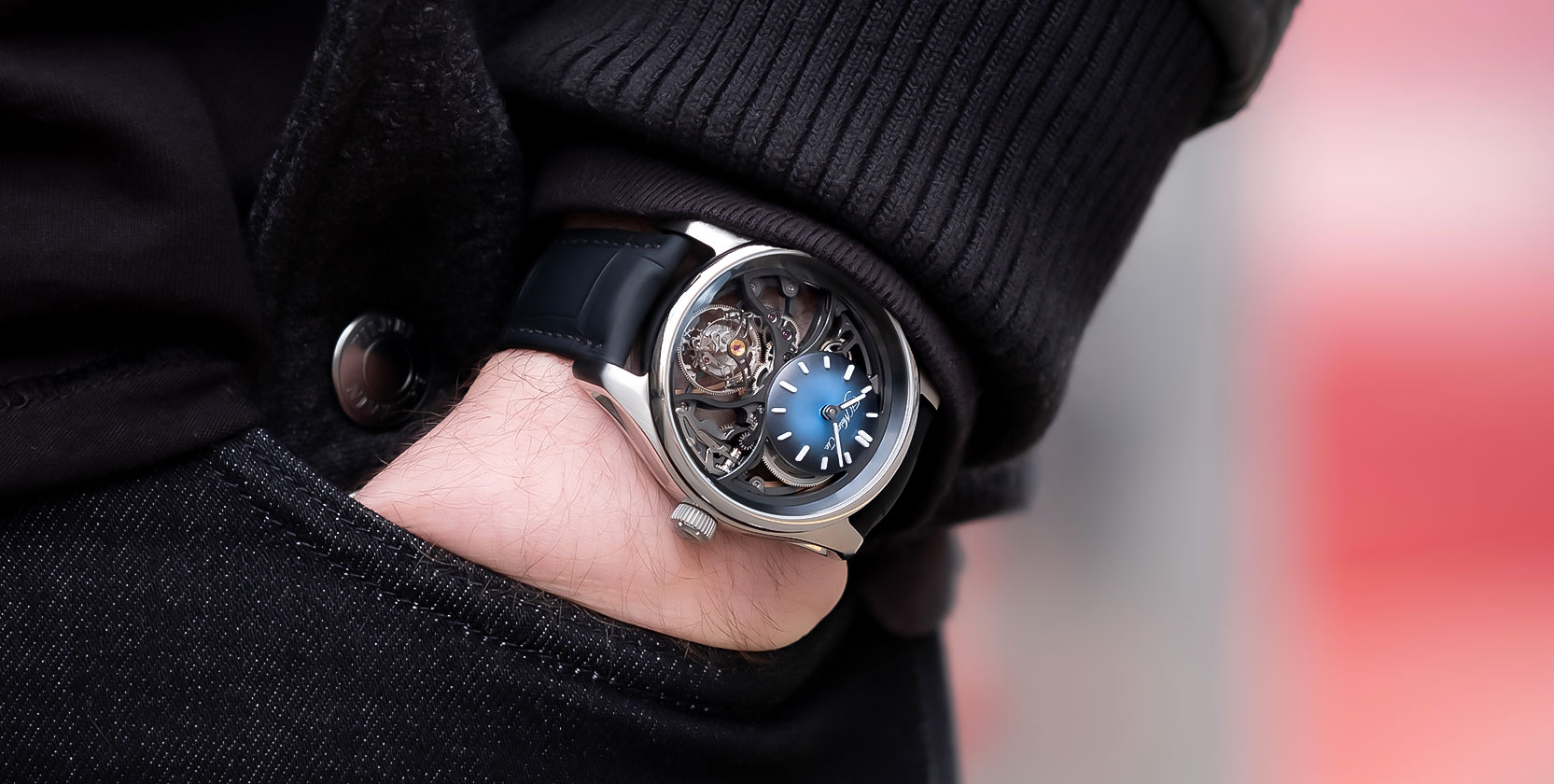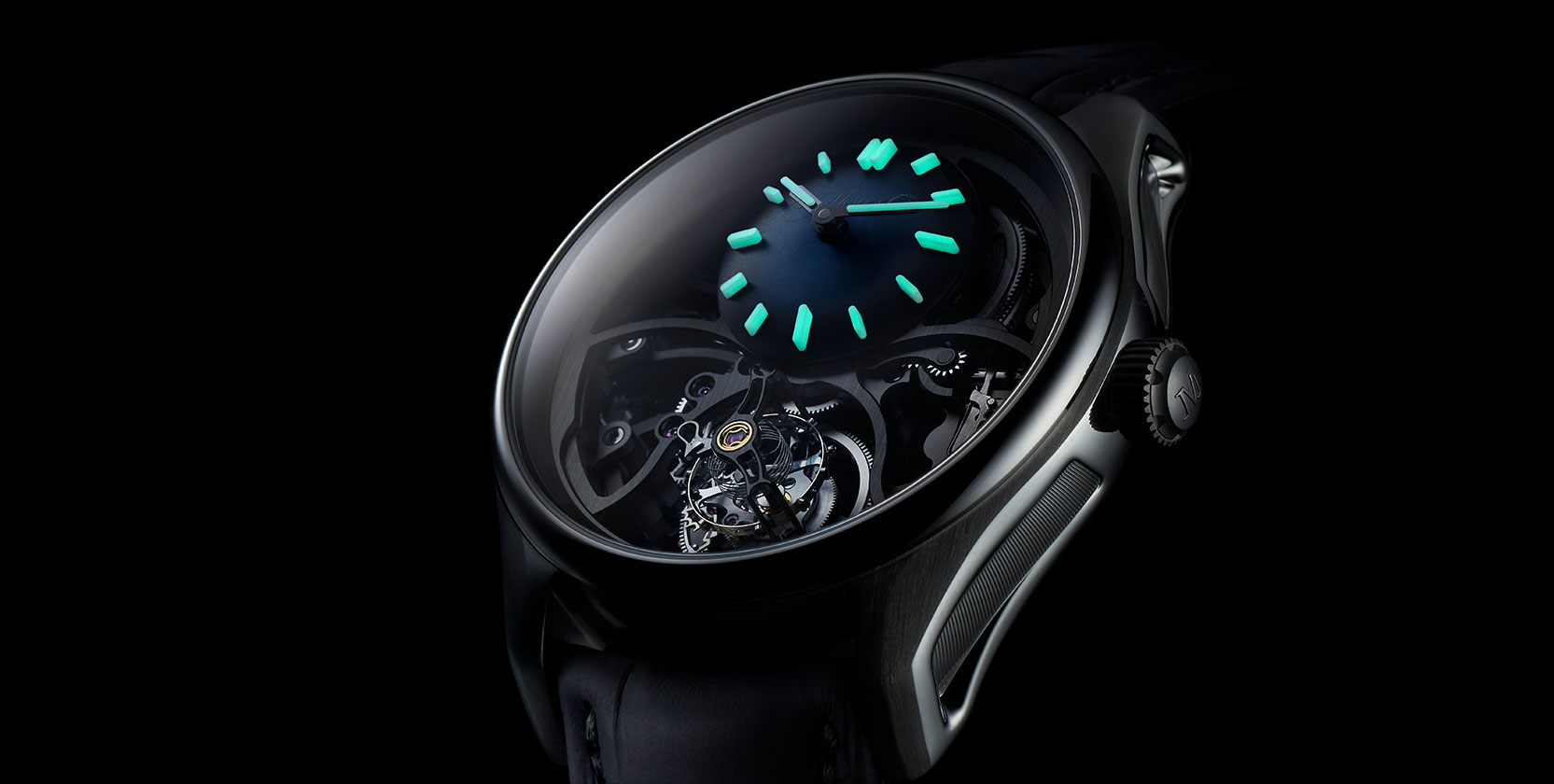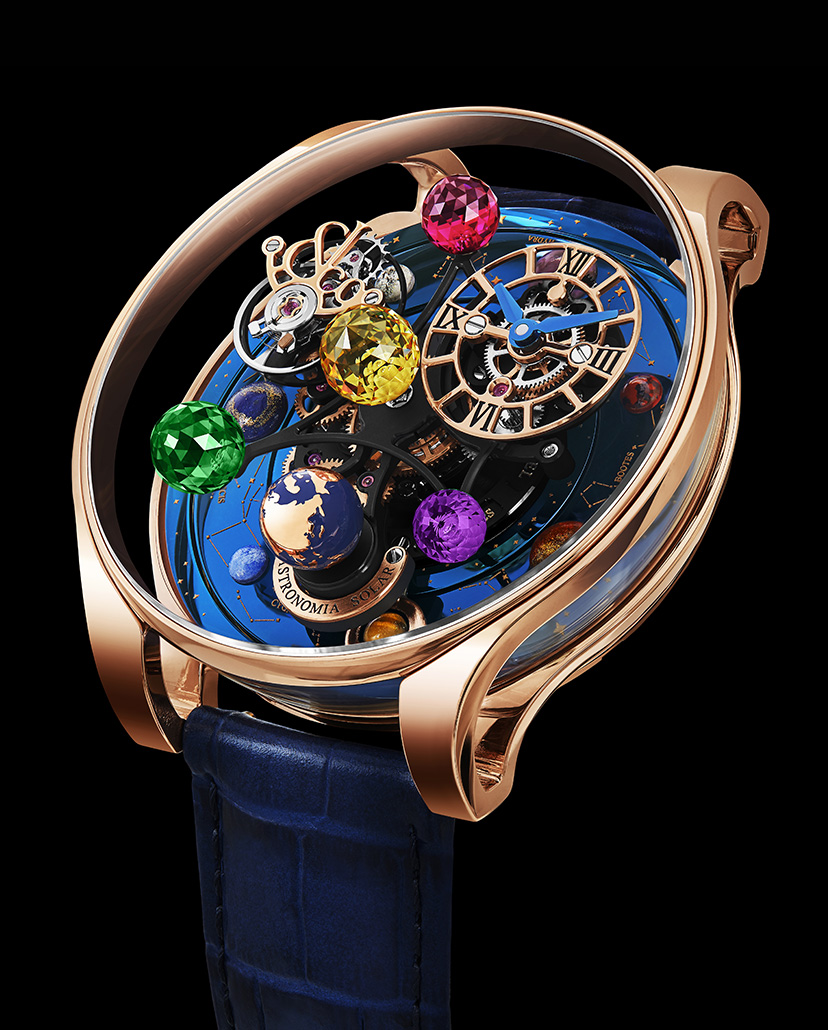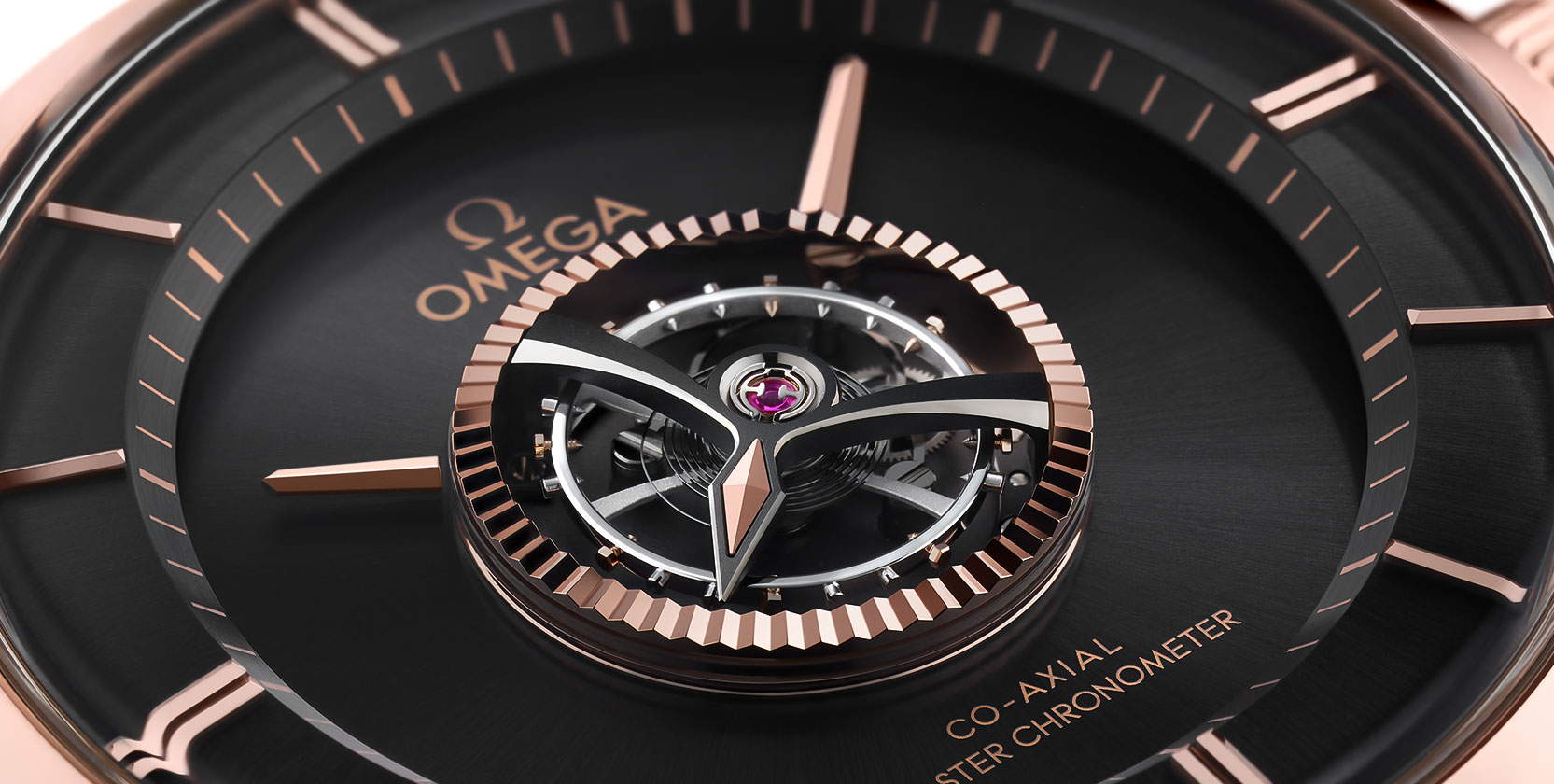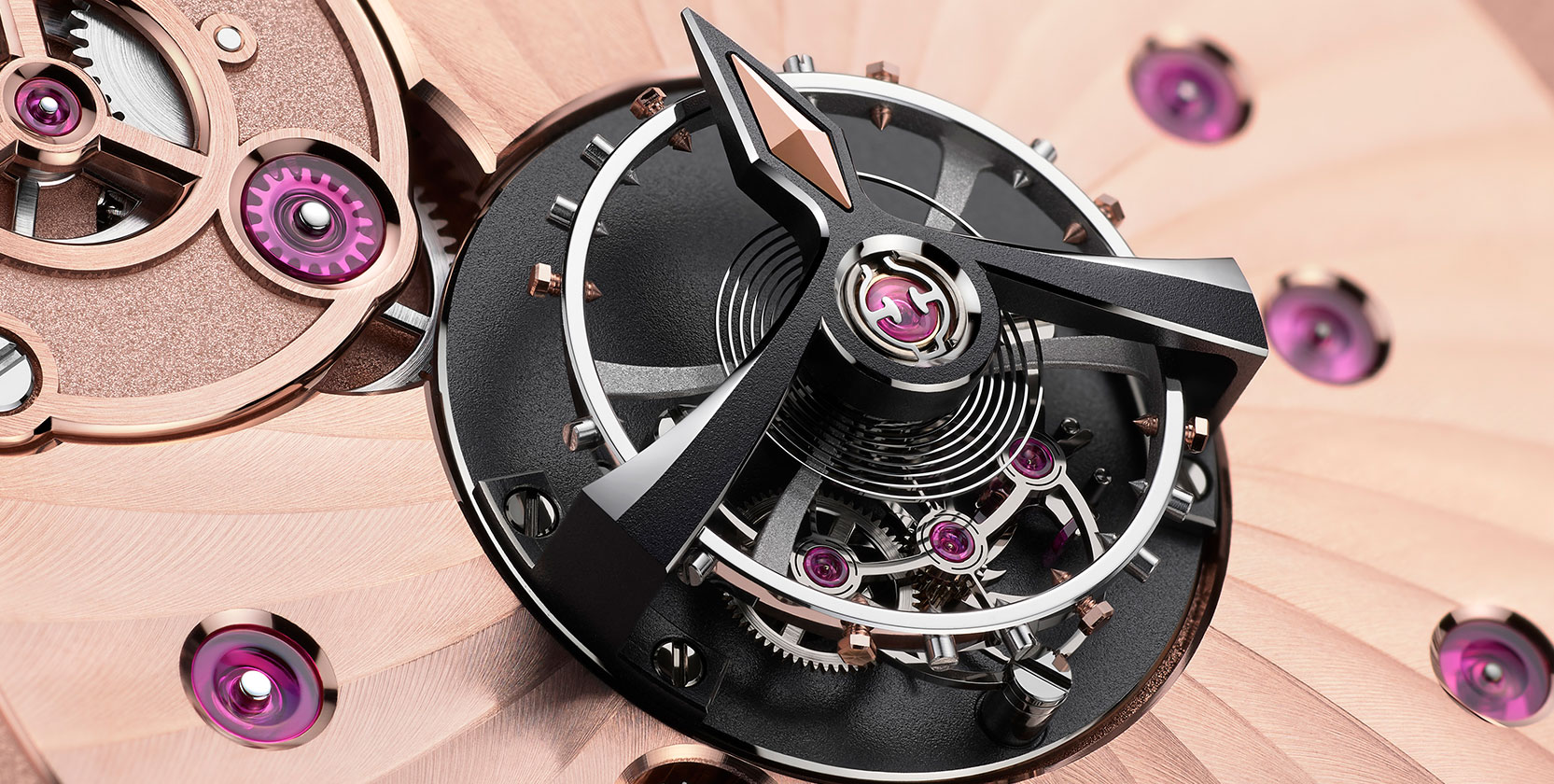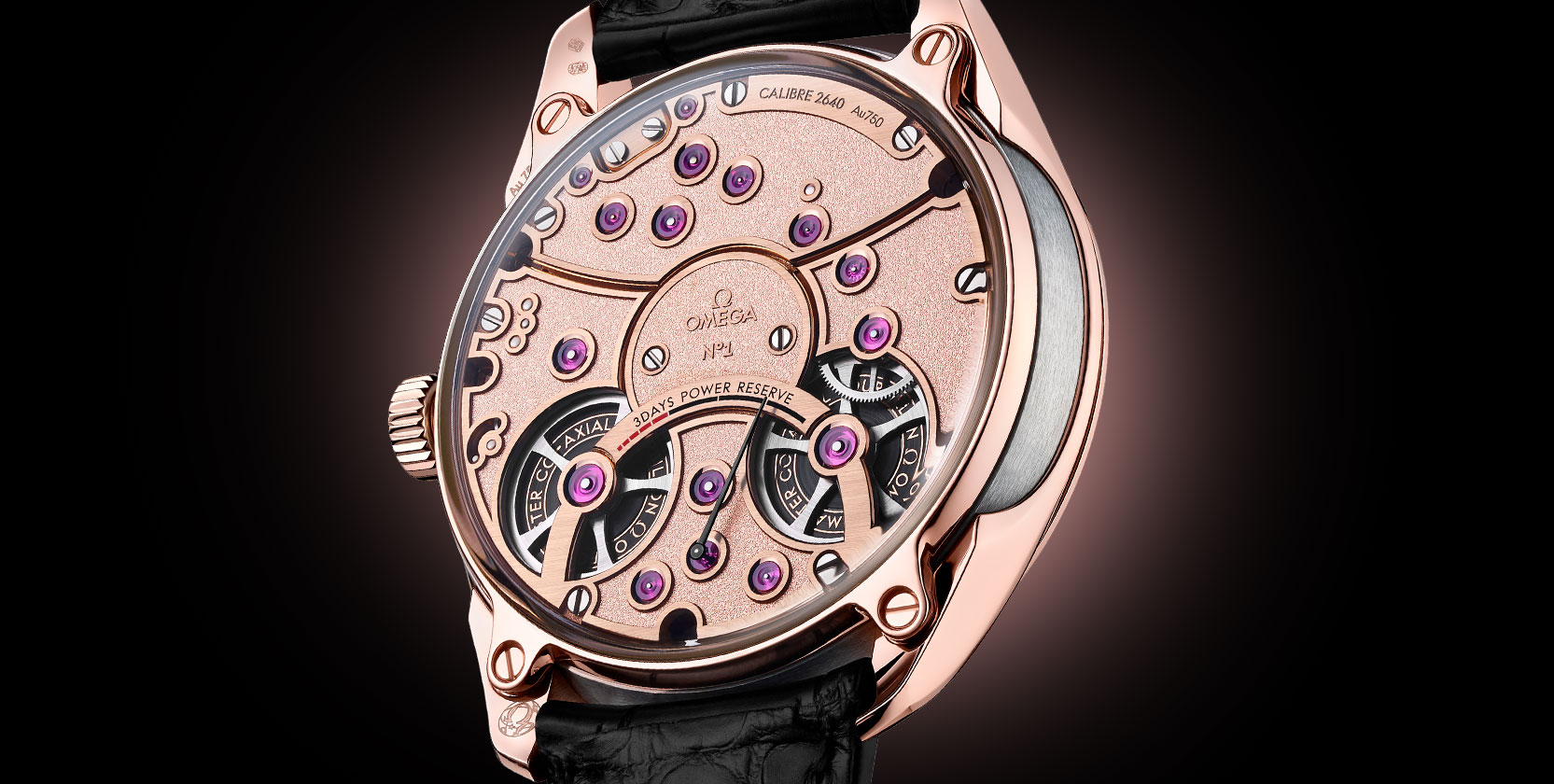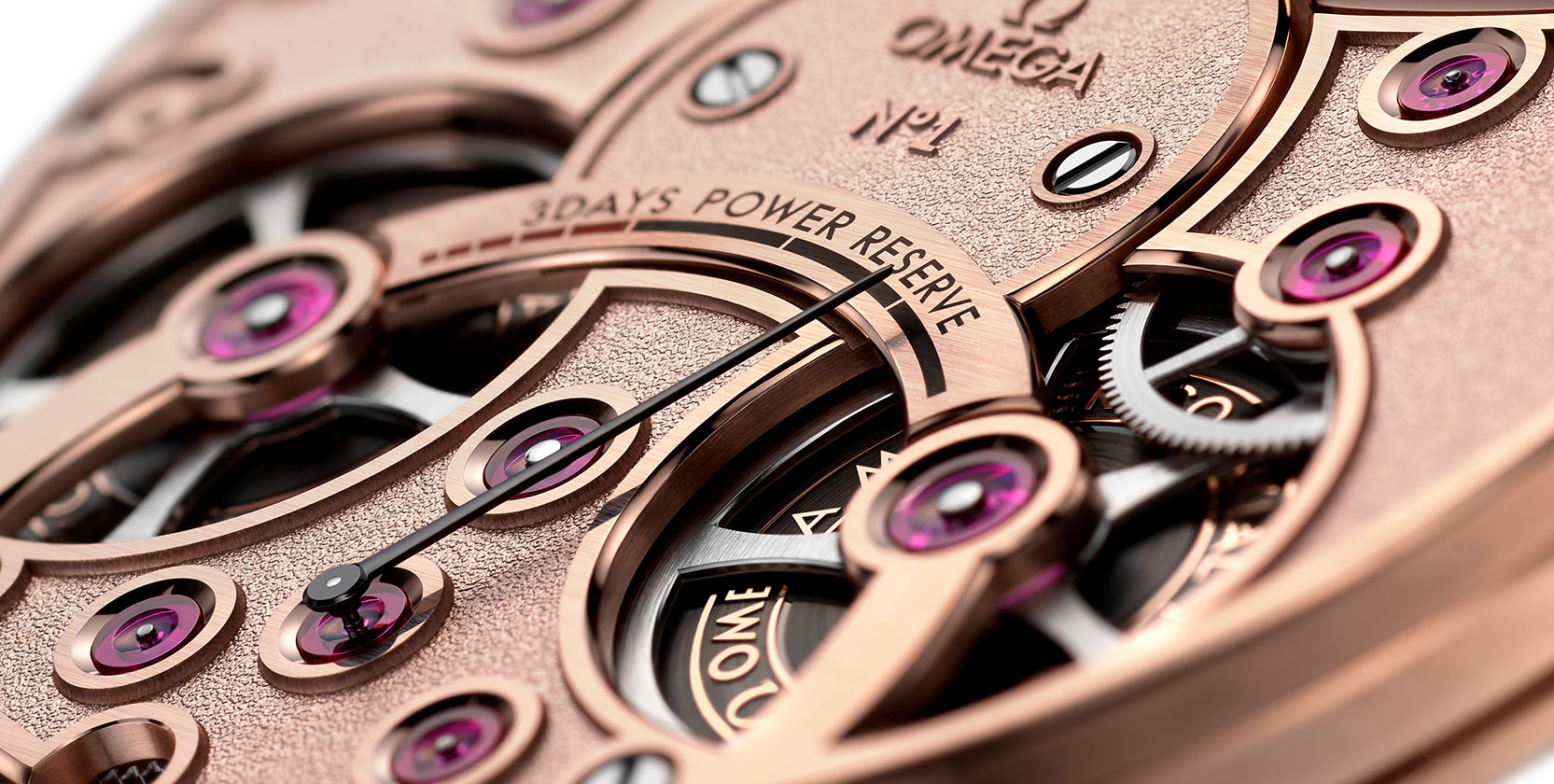Round-UpThe Queen Of Fine Watchmaking Complications: Presenting The 10 Best Tourbillon Timepieces
The tourbillon—the holy grail of fine watchmaking—captivates interest from horological experts all over the globe, with only a handful of watchmakers having mastered the complication. We bring you 10 of the finest tourbillon watches that have each made a mark in their own way
May We Recommend
Arguably the most intriguing complication in fine watchmaking, the tourbillon on a timepiece is more than just a conversation starter, and most tourbillon watches feature partially or completely open-worked dials. The French word ‘tourbillon’ translates to ‘whirlwind’ in English, which basically describes its function. The tourbillon is a cage that holds the watch’s regulating organs—the balance spring, lever and escapement—and rotates constantly to negate the effects of gravity on the components within. Developed by Swiss watchmaker Abraham Louis Breguet in 1795, and patented in 1801, the tourbillon is still one of the most complex complications that only a handful of watch manufactures have mastered. The skill and sophistication involved in creating tourbillon watches is the reason why it is considered as royalty among fine watchmaking complications.
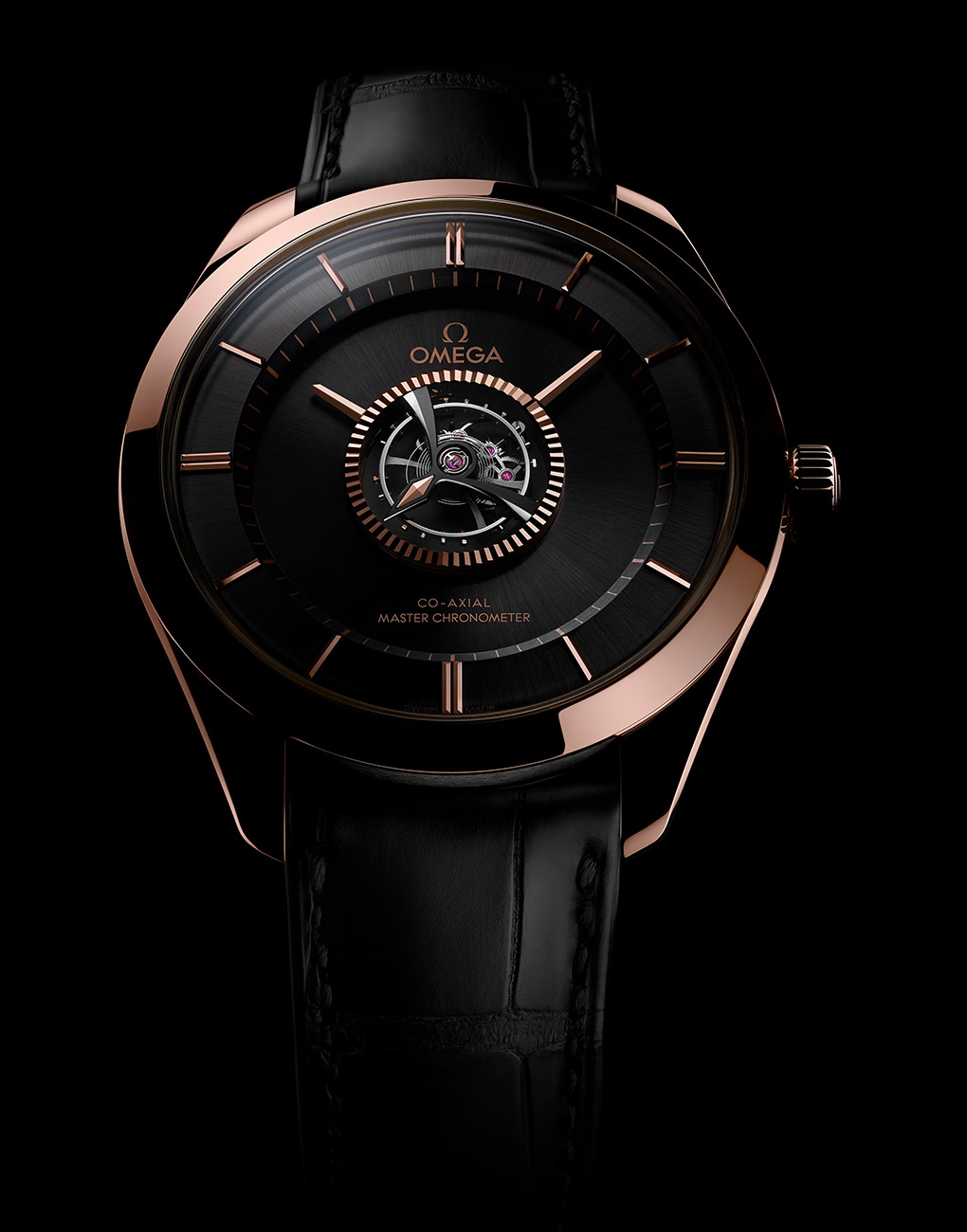
Here are the Best Top 10 Tourbillon Watches in 2024
- Angelus U50 Diver Tourbillon
- Arnold & Son Ultrathin Tourbillon
- Bovet Fleurier Virtuoso III
- Carl F. Bucherer Manero Tourbillon Double Peripheral
- Girard-Perregaux Tourbillon With Three Flying Bridges
- H. Moser & Cie. Pioneer Cylindrical Tourbillon Skeleton
- IWC Portofino Hand-Wound Tourbillon Rétrograde
- Jacob & Co Astronomia Solar Constellations Planets And Yellow Stone
- Omega De Ville Tourbillon Numbered Edition
- TAG Heuer Carrera Chronograph Tourbillon
Angelus U50 Diver Tourbillon
The Angelus U50 Diver Tourbillon is more than a diver’s watch, with a skeletonised dial housed in a robust 45mm titanium case that offers a water resistance rating of 300m. Short, curved, open-worked lugs aid ergonomics. With no real dial to speak of, the internal bezel ring stands out in blue and yellow, with a matching yellow-framed running seconds sub-dial between nine and 10 o’clock. Blue lacquered hands are filled with Super-LumiNova, as are hour markers on the narrow flange. At 6:30 is the tourbillon. While this horological marvel doesn’t enhance a dive in any way, it does look good on the timepiece, making the Angelus U50 Diver Tourbillon more a statement about being up for adventure, rather than an actual diving tool. The manually-wound A300 calibre, with its skeletonised bridges, is displayed gorgeously, with the tourbillon placed conspicuously on the dial.
Angelus U50 Diver Tourbillon In A Nutshell
- Case: Titanium, 45mm, with sapphire crystal; upto 300m water resistance
- Functions and display: Flying tourbillon, small seconds, skeletonised bridges, openworked caseback, Super-LumiNova applied hands and hour markers
- Movement: Manual-winding calibre A-300
- Strap: Black rubber with titanium pin buckle
Arnold & Son Ultrathin Tourbillon
English watchmaker John Arnold came up with the idea of the tourbillon, even if his friend Breguet actually executed it. It is not that surprising that Arnold & Son—who build on the legacy of John Arnold himself—frequently feature tourbillons in their collections, be it the Time Pyramid, Grandes Complications, Tourbillon Chrono 36 or Métiers d’Arts lines. The Ultrathin Tourbillon, with a thickness of just 8.3mm, has the A&S8300 calibre housed within. While this is no longer the slimmest tourbillon movement out there, it definitely is among the thinnest. The 41.5mm case of the Ultrathin Tourbillon is made from red gold or platinum, and features a domed sapphire crystal glass over a ‘cosmic green’ dial. This dial is achieved by mixing gold powder and aluminum flecks to evoke a starry sky. The timekeeping sub-dial at 12 o’clock is balanced by the tourbillon at six, as a contemporary nod to the legendary watchmaker’s marine chronometers that displayed information in a highly symmetrical fashion.
Arnold & Son Ultrathin Tourbillon In A Nutshell
- Case: Platinum, 41.5mm, with sapphire crystal, white mother-of-pearl sub-dial, dial plate sandblasted with gold powder and aluminum sparkles
- Functions and display: Flying tourbillon, small seconds, openworked caseback, luminous hands and hour markers
- Movement: Manual-winding calibre A&S8300
- Strap: Green leather with platinum pin buckle
Tourbillon Watches: Bovet Fleurier Virtuoso III
Intricate detailing on the dial, and integrated complications within the manual-winding calibre 16BM02AI make the Bovet Fleurier Viruoso III a stunning blend of both form and function, and a true execution of haute horlogerie. Its 43.3mm convertible rose gold case doubles up as a wristwatch, pocket-watch and table clock, as part of the brand’s Amadéo system. Then there’s the two-faced dial, with jumping hours and retrograde minutes on one side, and a regular timekeeping sub-dial decorated with Roman numerals in rose gold on the other side. Carved rose gold bridges and plates of the movement are decorated with blued screws and rubies, and frame the sub-dials at 12 on either face of the watch. These timekeeping sub-dials of the Bovet Virtuoso III are coloured a rich green and decorated with a guilloche pattern. These are offset beautifully by the open-worked tourbillon at six, displayed prominently on both faces of the dial.
Bovet Fleurier Virtuoso III In A Nutshell
- Case: 18-karat rose gold, 43.3mm, with sapphire crystal, crown at 12 o’clock
- Functions and display: Can shapeshift into table clock, pocket watch, pendant and wristwatch. Jumping hours, minutes, seconds, date aperture, power reserve indicator, tourbillon
- Movement: Manual-winding calibre 17BM01AI-QPR
- Strap: Green leather with rose gold pin buckle
Tourbillon Watches: Carl F. Bucherer Manero Tourbillon Double Peripheral
Featuring the first-ever peripherally mounted floating tourbillon on a timepiece that’s wound by a peripheral rotor, the Carl F. Bucherer Manero Tourbillon Double Peripheral is fascinating for its functional brilliance. Pioneers in peripheral technology, Carl F. Bucherer were the first to present a tungsten rotor moving around the periphery instead of being mounted on top, making the movement thinner, more accurate, and improving visibility in the caseback view. Similarly, the tourbillon is mounted peripherally on the movement at the unique position of 12 o’clock and supported by ceramic ball bearings, rather than on the base plate via a bridge. The 18-karat rose gold case measures 43.1mm, and houses a silver dial with rose gold hands and indexes. A matching hand on the tourbillon cage indicates the seconds.
Carl F. Bucherer Manero Tourbillon Double Peripheral In A Nutshell
- Case: 18-karat rose gold, 43.1mm, with sapphire crystal, openworked caseback
- Functions and display: Peripherally mounted floating tourbillon at 12 o’clock, small seconds, dauphine hour and minute hands
- Movement: Automatic calibre CFB T3000
- Strap: Brown leather with rose gold folding clasp

Girard-Perregaux Tourbillon With Three Flying Bridges
Often, Girard-Perregaux timepieces serve as a bridge between the past and the future, and the Tourbillon with Three Flying Bridges is no exception. The maison crafted all three bridges from rose gold, coated with black PVD, with only the gilded vertical flanks of the bridges exposed. ‘Neo’ bridges act as the movement’s baseplate, supporting the barrel, gear train and tourbillon. All the components on the open-worked dial are arranged at different heights, giving the dial a sense of depth, further enhanced by the darkened bridges against the rose gold of the case. The case itself measures 44mm and features a ‘box’ crystal over the dial. The tourbillon cage at six o’clock has 79 components and weighs only a quarter of a gram. Skeletonised hands in rose gold against the black PVD of the bridges with two pink rubies decorating them make this a beautiful and highly legible rendition of the brand’s Three Flying Bridges collection.
Girard-Perregaux Tourbillon With Three Flying Bridges In A Nutshell
- Case: 18-karat rose gold, 44mm, with sapphire crystal, openworked dial and caseback
- Functions and display: Tourbillon cage at six o’clock, three rose gold bridges coated with black PVD, small seconds, skeletonised hands
- Movement: Automatic calibre GP09400-1273
- Strap: Black leather with triple folding rose gold buckle
H. Moser & Cie. Pioneer Cylindrical Tourbillon Skeleton
The ‘Tourbillon Prize’ winner at the GPHGs last year, H. Moser’s Pioneer Cylindrical Tourbillon Skeleton displays the brand’s HMC 811 calibre gloriously on the skeletonised dial. An opaque timekeeping sub-dial partially obscures the movement, but the tourbillon at six o’clock, with a cylindrical hairspring instead of a spherical one, is the showstopper. The timepiece is housed in a 42.8mm round case that’s characteristic of the brand’s Pioneer collection, with a curved sapphire crystal glass protecting the movement within, and a 120m water-resistance that makes the Pioneer Cylindrical Tourbillon Skeleton fascinating in more ways than one—or two. The bridges on this movement have been darkened, thus highlighting the lighter elements underneath. On turning the watch over, a fully-skeletonised gold rotor allows for a beautiful view of the calibre.
H. Moser & Cie. Pioneer Cylindrical Tourbillon Skeleton In A Nutshell
- Case: Steel, 42.8mm, with curved sapphire crystal glass, openworked dial and caseback
- Functions and display: One-minute flying tourbillon at six o’clock, 120m water resistance
- Movement: Self-winding skeleton calibre HMC 811
- Strap: Leather, steel, rubber, textile or kudu leather, with steel folding clasp
Tourbillon Watches: IWC Portofino Hand-Wound Tourbillon Rétrograde
IWC’s Portofino collection received a massive upgrade with two complications—a tourbillon and a retrograde date display—in the Portofino Hand-Wound Tourbillon Rétrograde. While the watch is a departure from the collection’s minimalistic appeal, the complications make up for that difference. The Portofino Hand-Wound Tourbillon Rétrograde features a power reserve indicator at three o’clock, a retrograde date display at nine o’clock and a skeletonised tourbillon at six o’clock. It is powered by the manually-wound calibre 59900 with an eight-day power reserve. Framing the dial and tourbillon movement is a 45mm rose gold case with a large, practical crown that eases winding of the watch every 192 hours. Rose gold leaf-shaped hands and thin indexes with a Roman numeral at 12 o’clock enhance the elegance of the IWC Portofino Hand-Wound Tourbillon Rétrograde timepiece.
IWC Portofino Hand-Wound Tourbillon Rétrograde In A Nutshell
- Case: Rose gold, 45mm, with curved sapphire crystal glass, partially openworked caseback
- Functions and display: Tourbillon at six o’clock, retrograde date display at nine o’clock, power reserve indicator at three o’clock
- Movement: Manual winding calibre 59900; eight-day power reserve
- Strap: Brown leather with rose gold pin buckle
Jacob & Co Astronomia Solar Constellations Planets And Yellow Stone
A stunning display of semi-precious stones on the dial of a watch, the Jacob & Co Astronomia Solar Constellations Planets and Yellow Stone timepiece is set in a 45.5mm, 18-karat rose gold case. Decorated with constellations, the blue titanium base turns anti-clockwise, even as the three-armed display above it turns clockwise. On the centre of this display is a massive diamond with 288 facets—the ‘Jacob cut’—representing the moon. On each of the three arms is a rose gold-plated skeletonised timekeeping sub-dial, a miniature globe lacquered in blue and gold. Another highlight is the double-axis flying tourbillon attached to the rotating arm, which completes one revolution on the axis in 60 seconds. Other planets made from semi-precious stones are fixed onto secondary arms. The entire mechanism is visible through the domed glass above and through windows along the casebands.
Jacob & Co Astronomia Solar Constellations Planets And Yellow Stone In A Nutshell
- Case: 18-karat rose gold, 45.5mm, with domed sapphire crystal glass
- Functions and display: Double-axis flying tourbillon at 10 o’clock completing one revolution on the axis in 60 seconds, three-armed clockwise display, 288-facet ‘Jacob cut’ diamond moon, miniature globe lacquered in blue and gold
- Movement: Hand-wound calibre JCAM19; 48-hour power reserve; 28,800vph
- Strap: Blue alligator leather with tang buckle
Omega De Ville Tourbillon Numbered Edition
Pioneers in anti-magnetic technology, Omega present their De Ville Tourbillon Numbered Edition in a 44mm case in 18-karat Sedna gold, with a stunning tourbillon taking centre stage on the timepiece. Inside is the brand’s co-axial Master Chronometer calibre 2640, with a three-day power reserve, indicated on the hand-bevelled 18-karat Sedna gold bridges and mainplate visible through the caseback. The symmetry and finishing on the movement are astounding. The most fascinating aspect of the tourbillon visible on the dial side is its ability to resist magnetic fields up to 15,000 gauss. The one-minute tourbillon—with a rose gold arrow indicating the seconds—features hand-polished bevels in black ceramised titanium. A black PVD treatment mutes the sun-brushed Sedna gold dial, letting the hour markers, floating hands and tourbillon shine through.
Omega De Ville Tourbillon Numbered Edition In A Nutshell
- Case: Sedna™ gold, 43mm, with sapphire crystal; water-resistant to 30m
- Functions and display: Anti-magnetic central tourbillon complication, power reserve indicator, openworked caseback
- Movement: Manual-winding calibre 2640; three-day power reserve, can withstand magnetic fields of up to 15,000 gauss
- Strap: Black leather
TAG Heuer Carrera Chronograph Tourbillon
The rugged aesthetic of the TAG Heuer Carrera Chronograph Tourbillon comes from its titanium case treated with black PVD, and paired with a carbon bezel and lugs. This robust 45mm timepiece with a water resistance rating of 100m, houses a COSC-certified tourbillon movement, the calibre Heuer02T, with timekeeping and chronograph functions and a one-minute tourbillon. Housed at six o’clock, the tourbillon bridge has a black finishing that matches the rest of the dial. The monochromatic aesthetic of the skeletonised timepiece is disrupted by the word ‘chronometer’ in red on the flange between eight o’clock and nine o’clock. Outlines of the two chronograph recorders at three o’clock and nine o’clock match the finishing on the hands and indexes which are filled with Super-LumiNova. What makes the 200-something-year-old complication more fascinating is the skill required to create the mechanism. Even Breguet, inventor of the tourbillon, only created 50 tourbillon watches with the complication in 25 years, that’s how complex it is. As we move into the future, more brands offer tourbillon watches in their collections today. And, although the number is still relatively small, the message delivered with each of these tourbillon watches is unique.
TAG Heuer Carrera Chronograph Tourbillon In A Nutshell
- Case: Titanium Grade 5 & Black PVD, 45mm, with sapphire crystal, openworked caseback
- Functions and display: COSC-certified one-minute tourbillon movement at six o’clock, skeleton dial; 100m water resistance
- Movement: Automatic calibre Heuer02T COSC
- Strap: Perforated black rubber strap

Frequently Asked Questions:
- What are the functions of a tourbillon?
The chief purpose of a tourbillon is to increase the watch’s accuracy in telling time by eliminating the positional errors that crop up when the watch experiences wrist movement. It cancels out these timing variations that distribute gravitational forces evenly over time.
- What is a flying tourbillon?
A flying or floating tourbillon is not mounted like a traditional or one-axis tourbillon. Most single-axis tourbillons are mounted with a support system such as a bridge or cock on both sides. The flying tourbillon, however, is supported by only one side as it removes the bridge to be directly connected to the movement. This construction gives off the impression that the tourbillon is floating.
- What are double and triple axis tourbillons?
A multi-axis tourbillon is an evolution of the one-axis tourbillon where the escapement is mounted in a cage that is rotated on two or more axes. A triple-axis or a tri-axial tourbillon rotates on three different axes, while a double-axis tourbillon only rotates on two axes.





